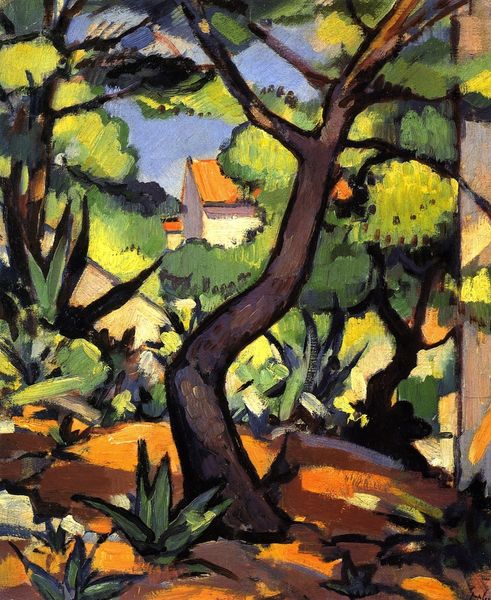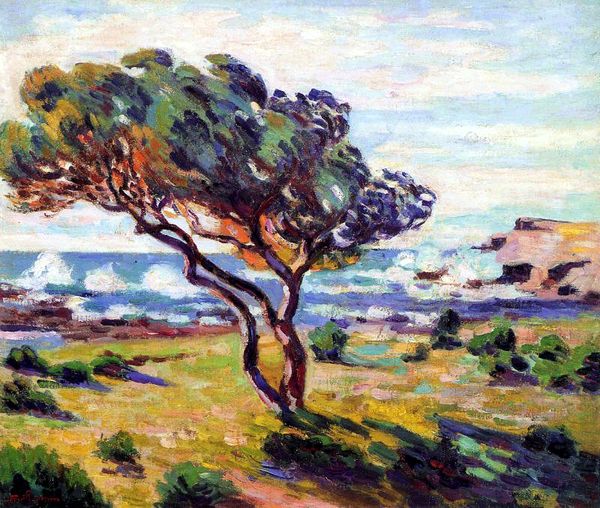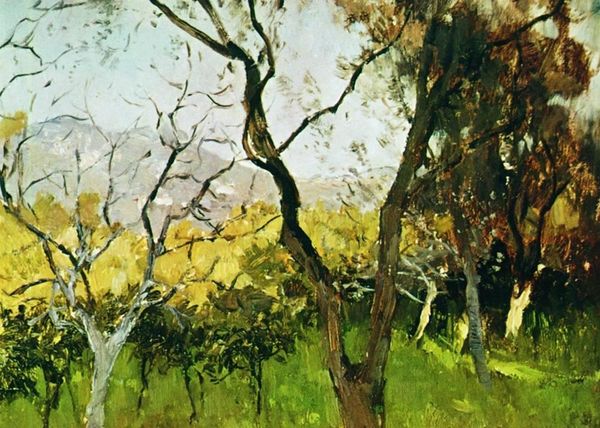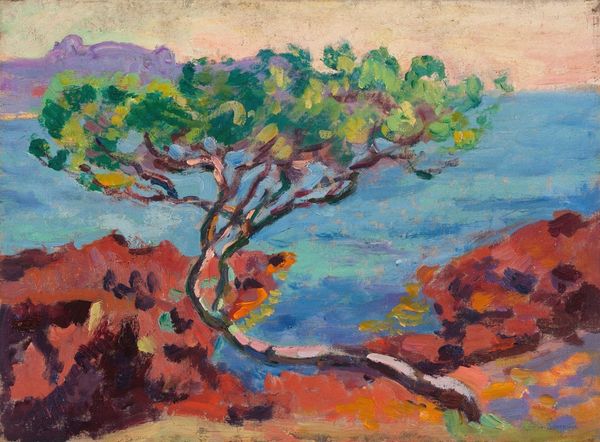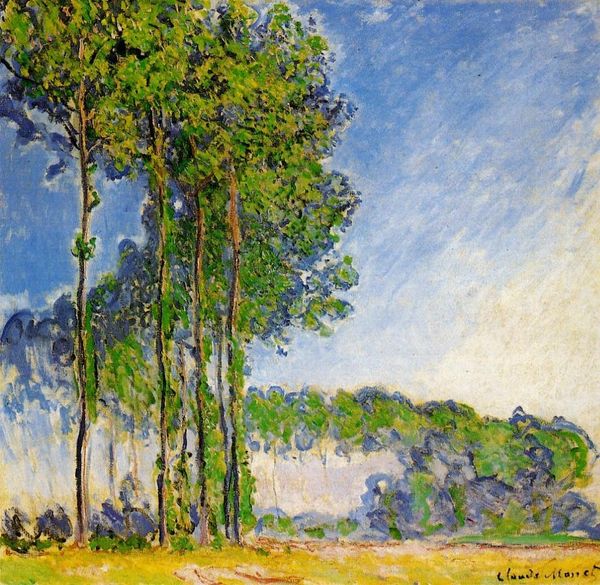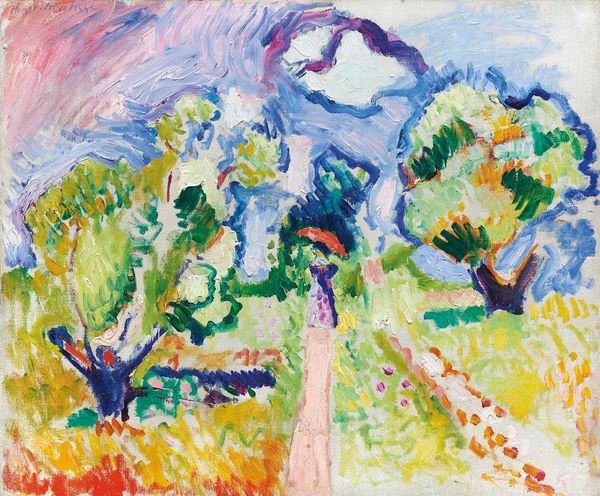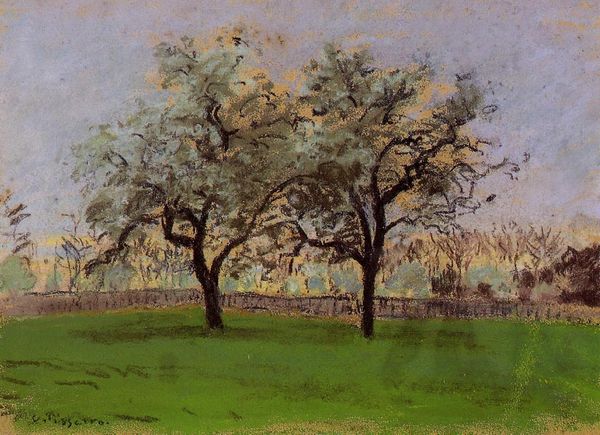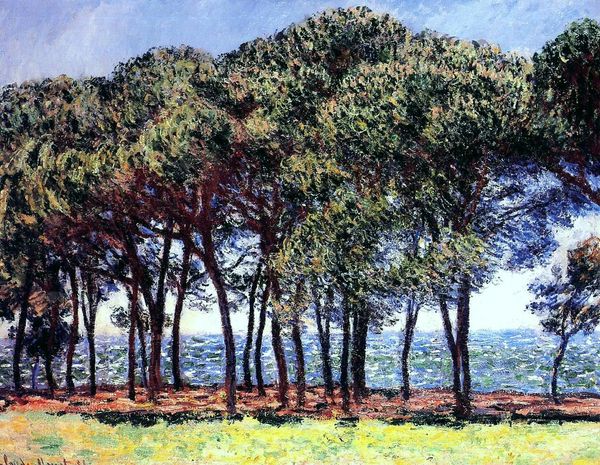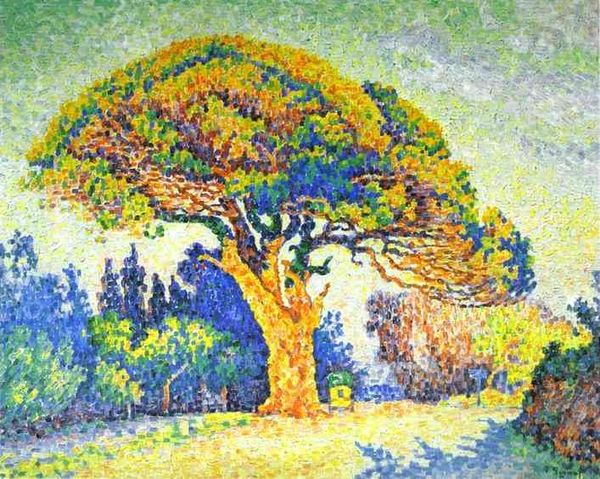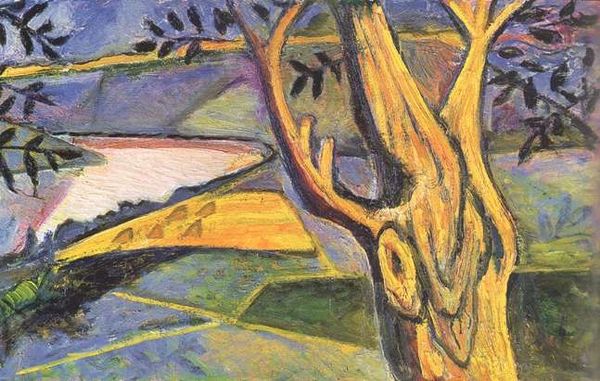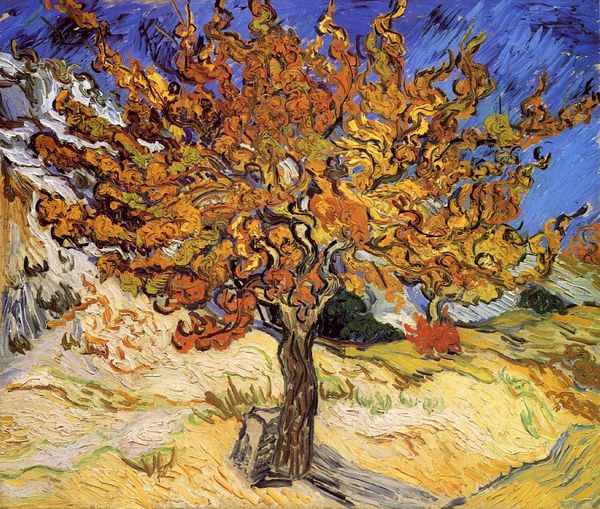
Dimensions: 81 x 65.7 cm
Copyright: Public domain
Curator: Here we have Paul Signac’s "The Bonaventure Pine," an oil on canvas painted in 1893. I find myself immediately drawn to the sheer mass of the tree’s foliage against that almost luminescent sky. Editor: It’s the texture that strikes me first – the palpable strokes of paint giving weight to the tree, rooting it in the landscape, underscoring the physical act of its creation. The layering of paint seems so deliberate. Curator: Absolutely. Signac was deeply involved with Divisionism, using separated brushstrokes of color that optically blend in the viewer's eye. This wasn’t just about aesthetics, but also reflected the burgeoning scientific approaches to understanding perception during that era and points toward class commentary on viewing experiences. Editor: Yes, this division of labor translated directly onto the canvas! What were the working conditions that allowed for the acquisition of pigments and canvases? Signac’s relative affluence and artistic production must be considered together. What about his relationship with the landscape being depicted? Curator: Those are relevant points, and we cannot ignore Signac’s place in the avant-garde and, frankly, the colonial gaze inherent in landscape painting during this period. I'd add, though, that this painting also serves as a statement on the artist's belief in social progress and change through an anarchist lens; looking at a natural and untouched object, perhaps, is not purely observation. Editor: Interesting, especially given that the artist employed new methods of mechanical reproduction such as painting to create a picture of untouched nature, that’s a dialectic! But I can't help focusing on those distinct marks making up that pine – each a deliberate act reflecting labor transformed into artistry. Curator: A dance between technique and theory. For me, this piece is a profound statement about our relationship with the natural world and social ideologies of the time and is tied inherently with gender inequality within that avant-garde artworld of the time. Editor: Right. Considering the physical properties, "The Bonaventure Pine" serves as a reminder that even a scene supposedly capturing light and air originates in materiality, in process, and a specific set of economic and social relationships.
Comments
No comments
Be the first to comment and join the conversation on the ultimate creative platform.
